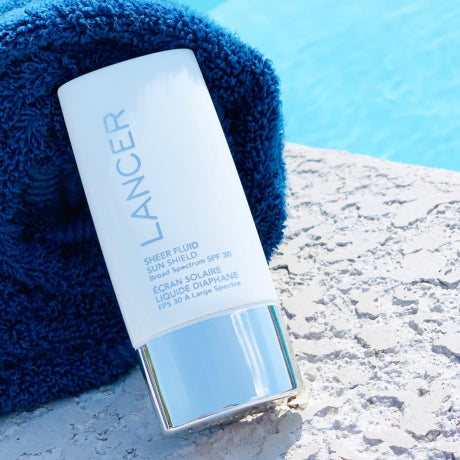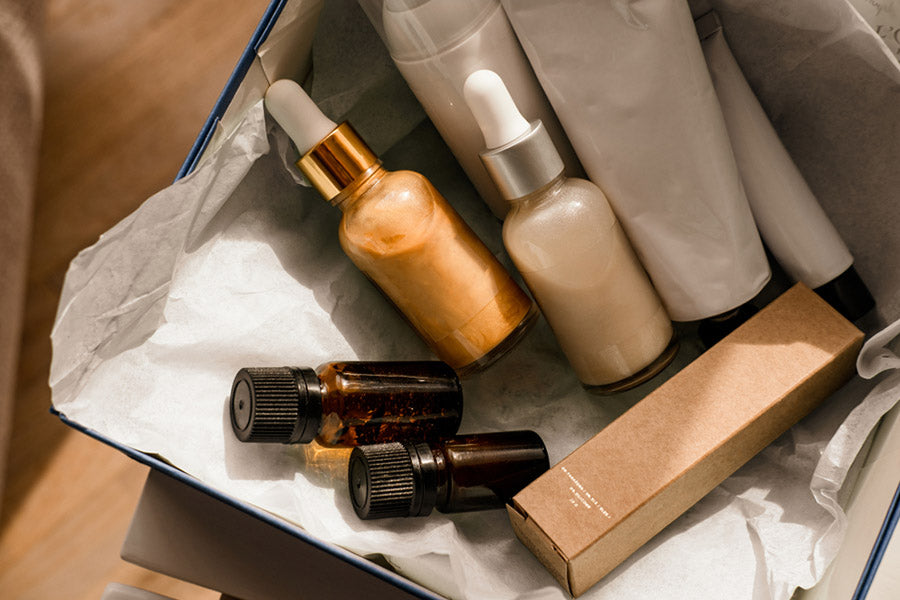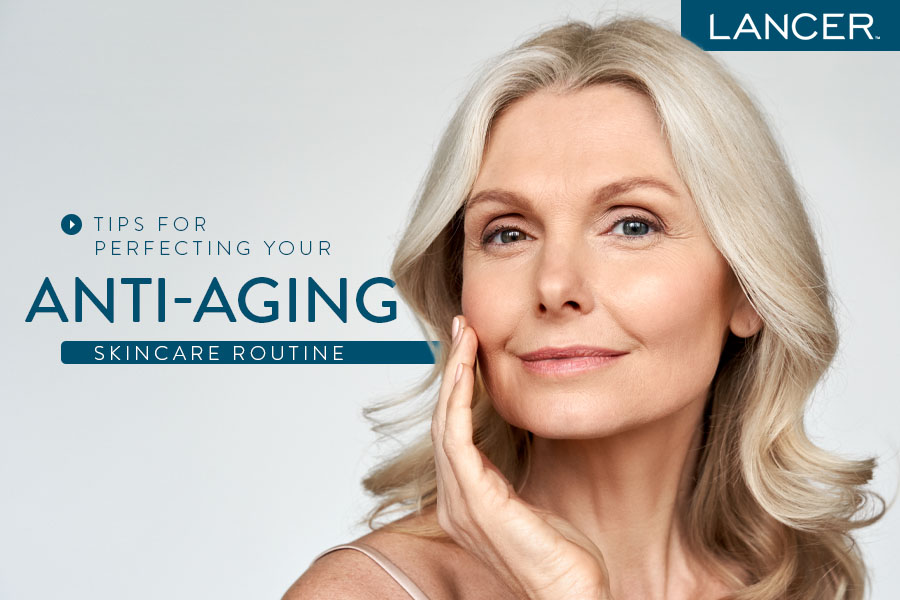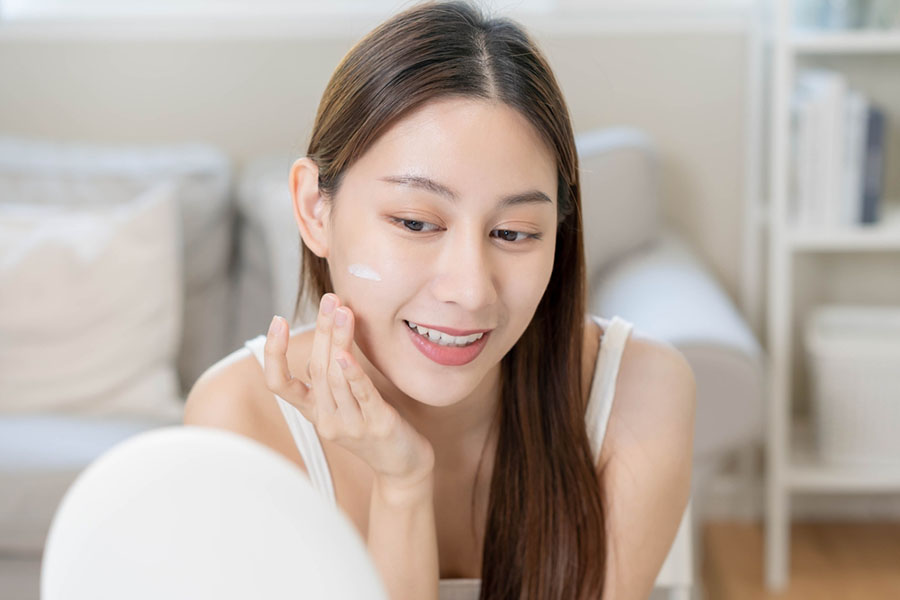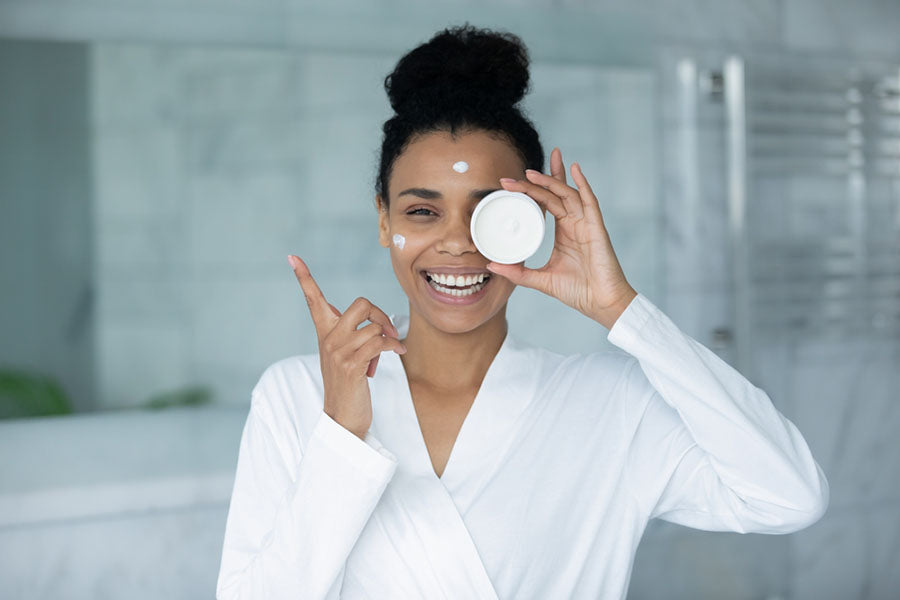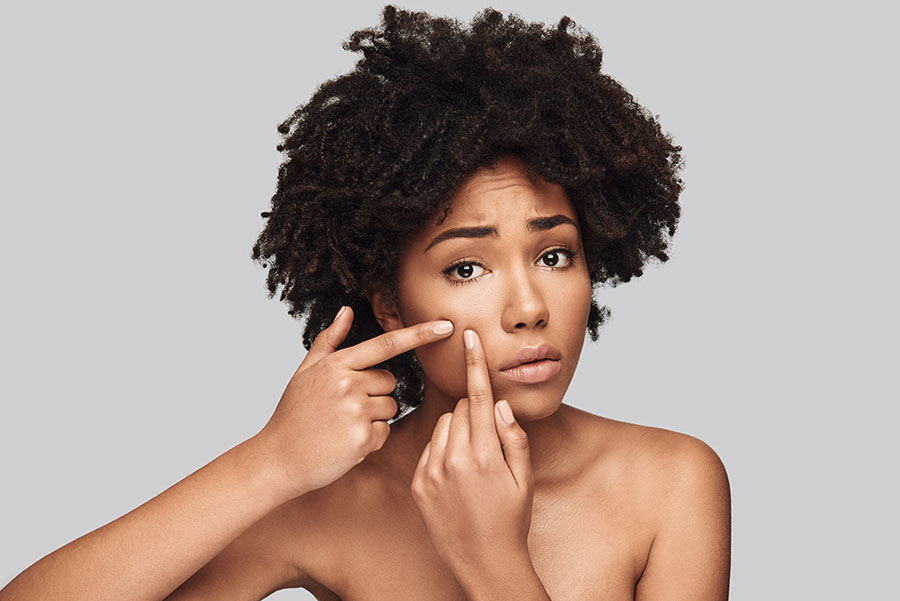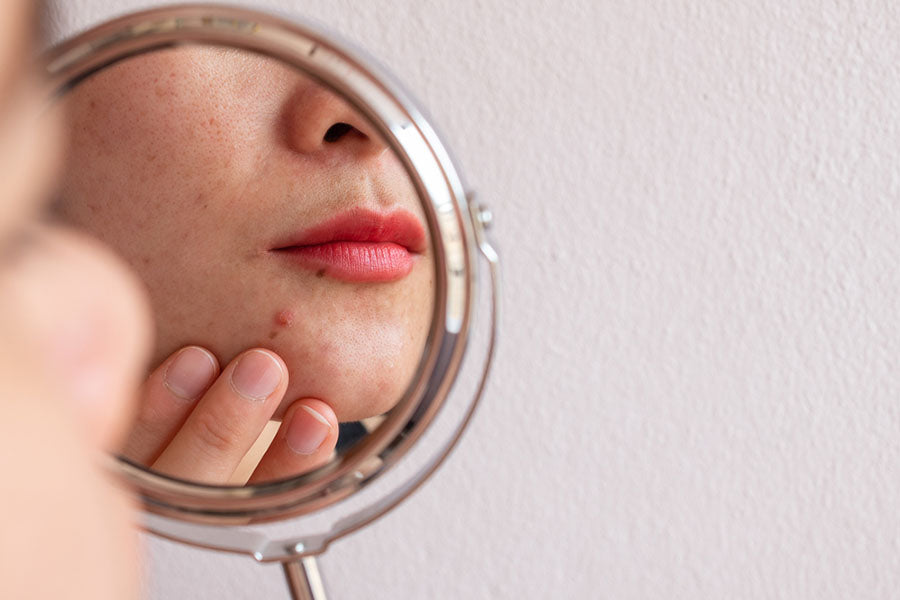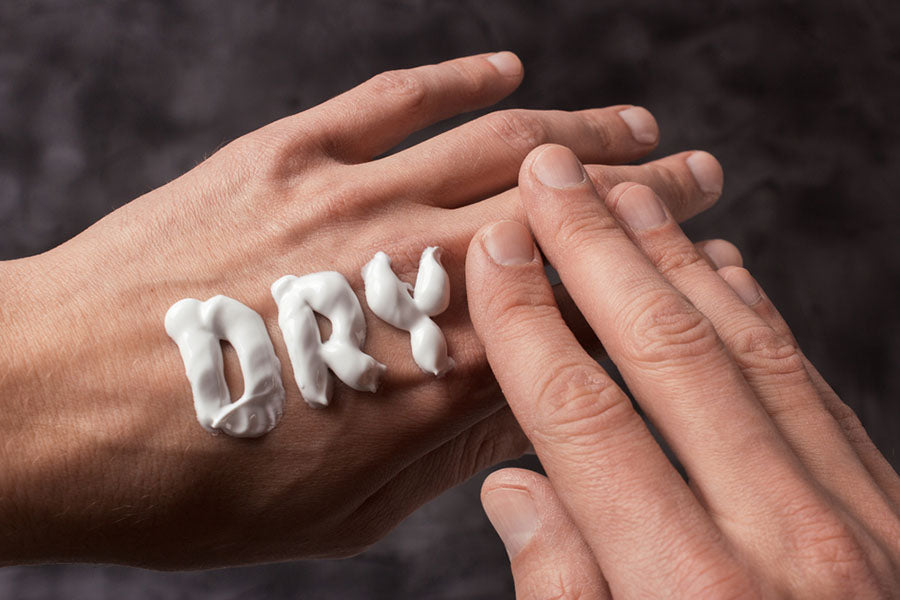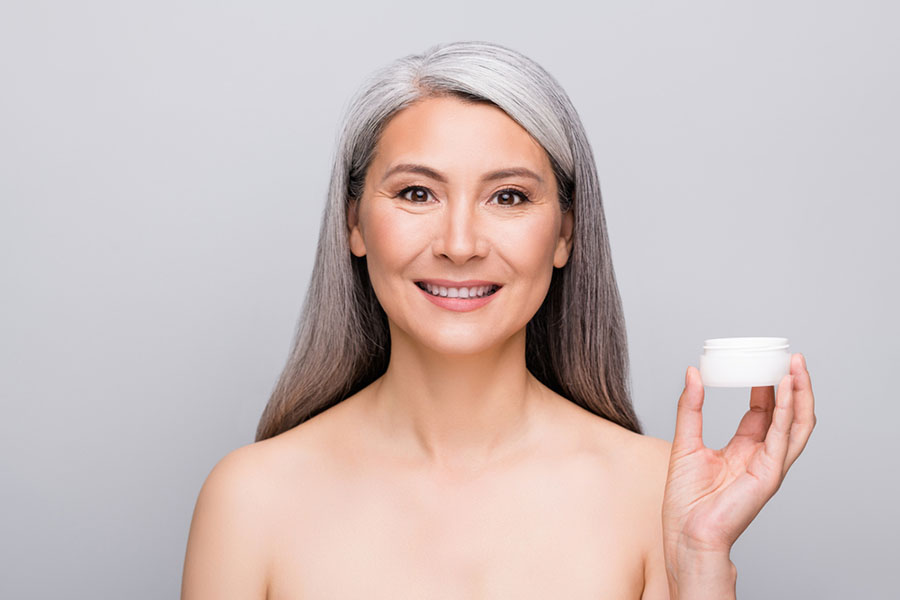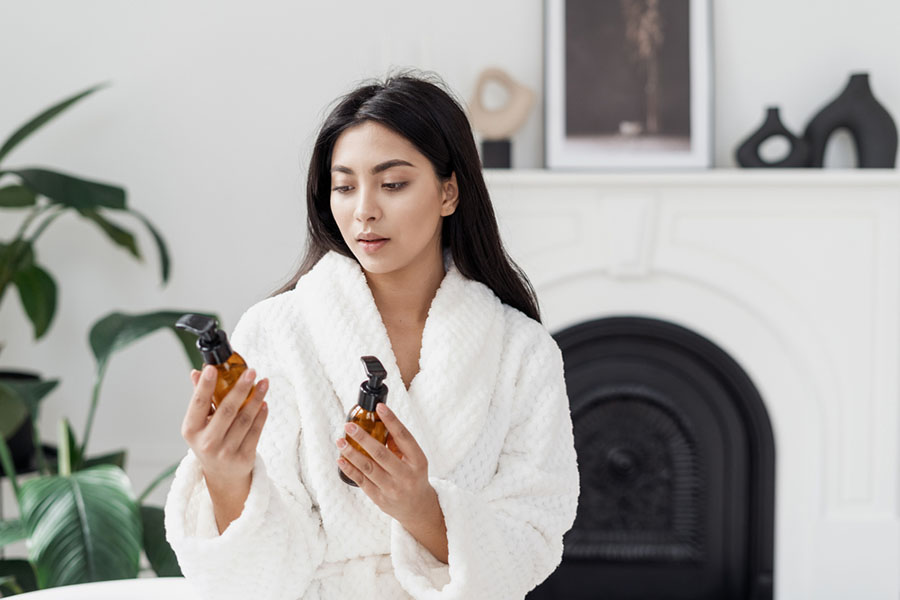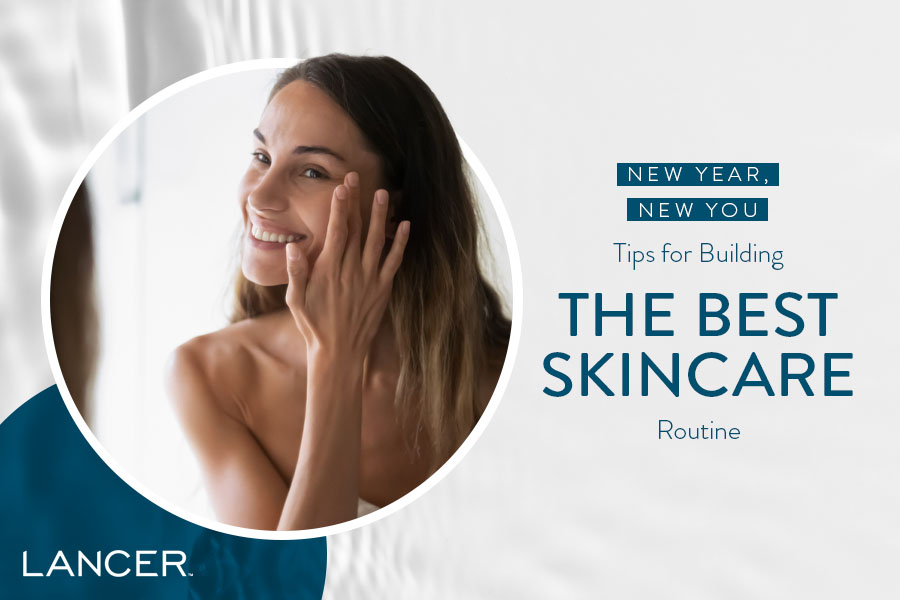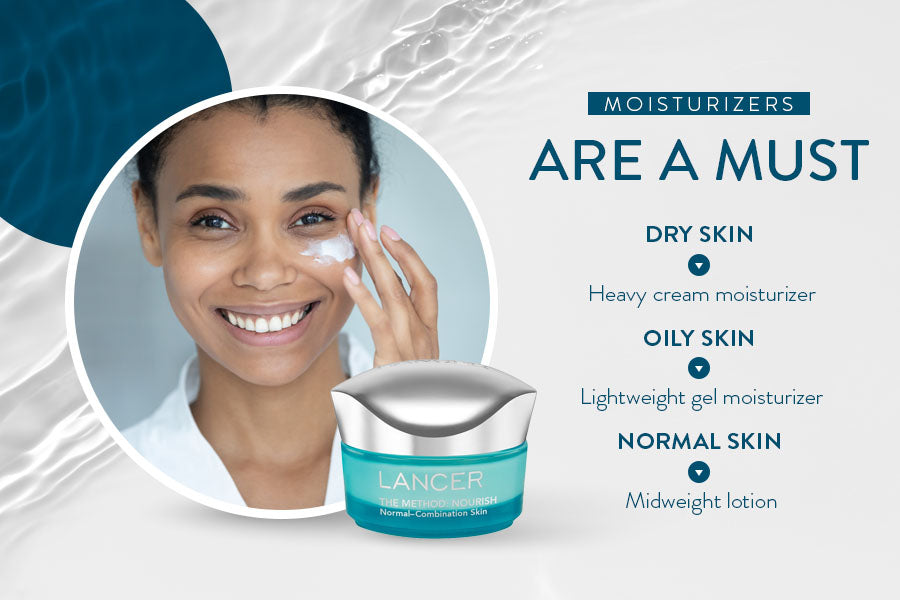Years ago, your only option for exfoliating your face was using a washcloth. Nowadays, the beauty industry has exploded with various skincare products and tools that can be used to exfoliate your face. In this guide, we’ll walk you through the pros and cons of six different ways to exfoliate your skin: cleansing with a face wash, using a scrub, applying a leave-on treatment or serum, trying a wash-off mask, using a traditional washcloth, and upgrading to a cleansing brush. If you’re new to exfoliating, be sure to check out our guide that explains how often you should exfoliate, plus other tips for exfoliating your skin. And don’t forget to browse our selection of tried-and-true skin exfoliators!
How to Exfoliate Skin with an Exfoliating Wash
Exfoliating washes are facial cleansers that contain alpha hydroxy acids (AHAs), beta hydroxy acids (BHAs), and polyhydroxy acids (PHAs). These chemical exfoliators work to dissolve the bonds between dead skin cells to wash them away. Some exfoliating washes also incorporate capsules or granules that physically brush away dead skin cells, although this is more common in face scrubs than washes (more on that in a minute).
Exfoliating washes are a good choice if you are looking to simplify your skincare routine and want to skip a separate exfoliating step. They are also a great choice for people with sensitive skin who find that other, stronger exfoliating treatments irritate their face. Because exfoliating washes are only on your face for about 60 seconds at a time, they may be less irritating than other options on this list. Some people can even tolerate using an exfoliating wash every day, while most other treatments can only be used one to three times a week.
To exfoliate your skin with an exfoliating wash, start by removing your makeup and sunscreen completely with a makeup remover. Once your face is clean and bare, dispense roughly a dime-size amount of the exfoliating cleanser into your palm and work it into a lather in between your hands. Then gently massage it over your face for one minute total, paying special attention to any areas where you have more pronounced dry patches. Don’t open your eyes, as the exfoliating wash will make them burn. Once the minute is up, rinse your face off with warm (not hot) water and proceed with the rest of your shower or skincare routine.
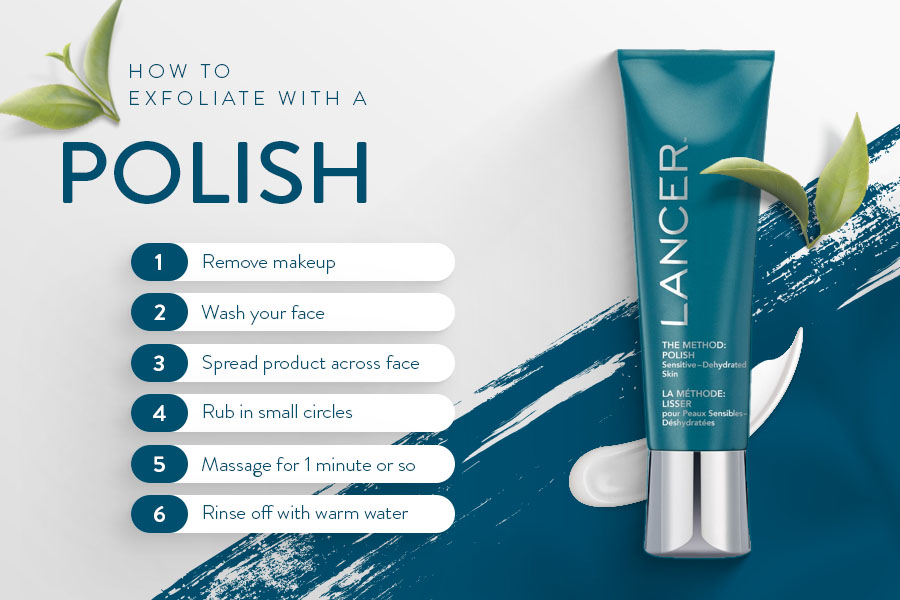
How to Exfoliate Skin with a Scrub or Polish
Scrubs are one of the most popular ways to exfoliate your skin. Scrubs have a rough texture that harnesses the power of physical exfoliation to clear away dead skin cells. Some of them also contain AHAs, BHAs, PHAs, and fruit enzymes so that you get the benefits of chemical exfoliation as well. For example, all of our Lancer Skincare polishes combine both physical and chemical exfoliation for very effective results.
Scrubs are very effective and simple to use, but they may be too harsh for extremely sensitive skin. You should also skip scrubs (and, really, any kind of exfoliation) if you have any open cuts, scrapes, or acne lesions, since the exfoliation can cause them to become irritated or infected. Scrubs can be used between one to seven times a week, depending on your skin tolerance.
To exfoliate your skin with a face scrub, start by removing your makeup and washing your face with a non-exfoliating cleanser. Depending on the product directions, you may apply the scrub directly to wet skin, or you may need to pat your face dry first. If the product can be applied to damp skin, you may find it easier to use the scrub in the shower so you can just rinse it away without worrying about getting messy.
Dispense about a nickel’s worth of product into your palm, and then gently spread it across your face, rubbing in small circles. Don’t put too much pressure on your skin or scrub too hard, and avoid the eyes and lips. Massage the scrub into your warm for a minute or so, and then rinse off the product with warm (not hot) water. Pat your face dry and follow it up with a nourishing serum and moisturizer.
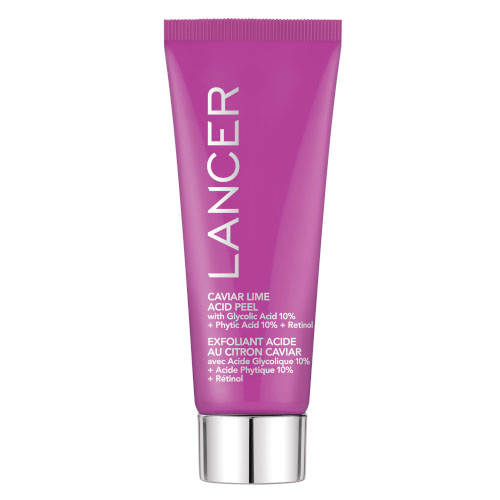
Try a Face Peel
How to Exfoliate Skin with a Leave-On Treatment
Leave-on exfoliating treatments and serums have exploded in popularity within the past few years. These skincare products use AHAs, BHAs, and PHAs to dissolve dead skin cells through the power of chemical exfoliation. Because they are designed to be left on the skin overnight, they typically contain lower concentrations of these ingredients than a wash-off mask or scrubs.
Leave-on exfoliating serums are available in all different formulas, from super-potent glycolic acid toners that work for oily skin to very gentle mandelic acid serums that for sensitive skin. If you are new to the world of leave-on chemical exfoliants, it’s best to start with a lower concentration and a gentler ingredients (such as polyhydroxy acids) that have a lower risk of irritating your face. If your skin does well, then you can work on building your tolerance for higher concentrations and stronger ingredients over time.
To exfoliate your skin with a leave-on treatment, start by removing your makeup and washing your face with a non-exfoliating cleanser, and then dry your face off completely. You can either apply the exfoliating serum directly to your bare skin, which will result in the most effective exfoliation, or you can put down a hydrating serum first if you have very sensitive skin. Apply a thin layer of serum all over your face, and then follow it up with a moisturizer to seal it in.
We recommend applying a leave-on exfoliator only at night, since it can make your skin much more sensitive to sun damage during the day. You should not use a leave-on exfoliator in the same routine as other powerful active ingredients, such as vitamin C and retinol, which will greatly increase your odds of irritating your skin. Some itching and tingling are normal when you first apply the product, but if your face burns or hurts, then you should immediately rinse off the product and discontinue use. If you’re looking for a more simple routine outside of a leave on treatment, our Gentle Exfoliating Peel Pads are another great way to exfoliate your skin! These pads are gentle and easy to use and are perfect if you’re travelling or on the go.
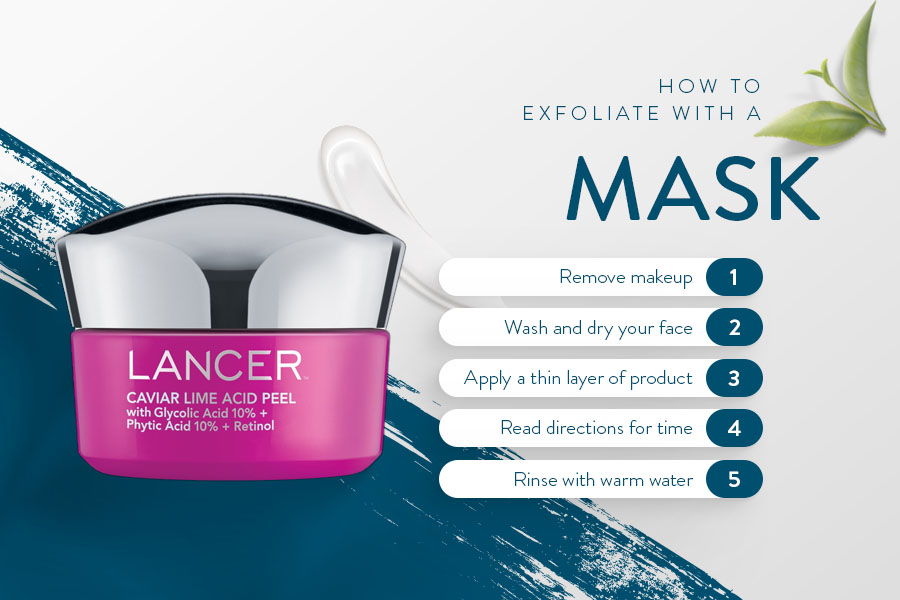
How to Exfoliate Skin with a Wash-Off Mask
Exfoliating masks and face peels are potent products that use chemical exfoliation to provide quick, effective results. These wash-offs masks can contain 30% or more AHAs and BHAs. Because the concentration is so high, they are typically designed to be used no more than once a week and left on for no more than 10 minutes at a time.
Exfoliating masks can’t get the same results as an in-office chemical peel offered by a dermatologist, but they are usually the strongest at-home exfoliating products available. As such, they are best used by veteran skincare aficionados who know that their skin has a high tolerance for exfoliating products. People with sensitive skin or those new to exfoliating should try a scrub or gentle leave-on serum first to get a better gauge of their skin’s tolerance.
To exfoliate your skin with a wash-off face peel like our Caviar Lime Acid Peel, start by removing your makeup and washing your face with a non-exfoliating cleanser. In most cases, you will need to dry your face off completely before applying the mask, but read the package directions to make sure. Apply a thin layer of product all over your face, avoiding the eyes and lips completely.
Never leave an exfoliating mask on for longer than the package directions state. If you have never used the product before, to prevent irritation we recommend leaving it on for as little as one minute before rinsing it off. Over time, you can build your tolerance until your skin can handle leaving the mask on for the full amount of time. When you’re done with the mask, thoroughly rinse off your face with warm (not hot) water and pat it dry. Follow it up with a nourishing serum and moisturizer to soothe your skin.
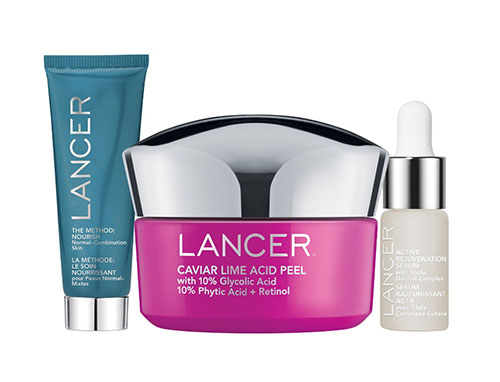
Browse All of Our Skincare Products
How to Exfoliate Skin with a Washcloth
Washcloths were basically the original exfoliating treatment; the rough surface of the fabric wipes away dead skin cells using physical exfoliation. While there are plenty of more advanced treatments available today, some people prefer the old-school method of using a washcloth to exfoliate. Washcloths are inexpensive, and most people already have them lying around the house, so they are very accessible.
For best results, use a clean washcloth every time to avoid contamination with germs. If possible, we recommend having dedicated washcloths that you only use for your face if you are set on using a washcloth to exfoliate your face. Washcloths are also an awesome option for exfoliating your body (which is less sensitive than your face), but it’s better to use separate washcloths for that.
To exfoliate your face with a washcloth, start by removing your makeup and sunscreen completely with a makeup remover. Once your face is clean and bare, put some face wash on the washcloth and gently move it in circles on your face. Don’t press too hard or scrub vigorously; your movements should be gentle and soft. Do this for about 60 seconds, moving all over your face and concentrating on the most pronounced dry patches. Once the minute is up, rinse off your face with warm (not hot) water and rinse out the washcloth.
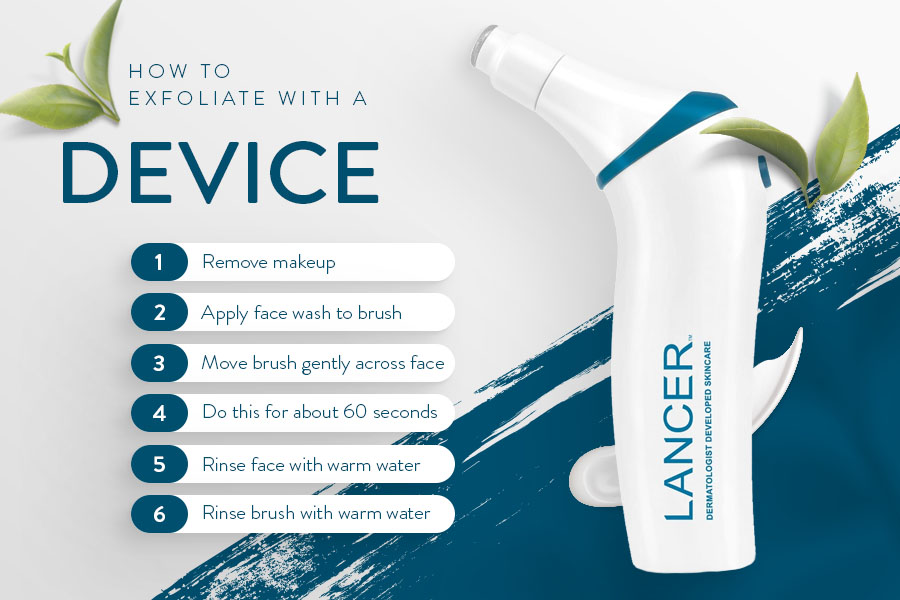
How to Exfoliate Skin with an Exfoliating Device
Exfoliating devices are basically the modern-day, high-tech version of a washcloth’s physical exfoliation. Our Microdermabrasion device features a patented 180 degree swivel neck effective for targeting hard to reach areas and 3 vacuum suction settings for customized exfoliation on different areas of the face and body. Our device also comes with 200 disposable filters to trap dead skin and keep the device in optimal condition, tweezers for replacing filters and one travel pouch. Maintaining your device will ensure maximum exfoliation and use.
To exfoliate your face with our exfoliating device, start by removing your makeup and sunscreen completely with a makeup remover. Once your face is clean and bare, apply a small-size amount of face wash to the head of the brush and turn it on. Move the brush gently around your face, starting on your forehead and working your way down. Keep the brush away from your eyes and lips, which are very delicate. Do this for about 60 seconds total, and then turn off the brush and rinse both your face and the brush with warm (not hot) water.
Looking to add an exfoliating product to your skincare routine? Check out our skincare sets, which feature our polishes and face peels. All Lancer Skincare products come backed with our 30-day money-back guarantee, plus all U.S. orders come with free and fast shipping, no order minimum required. Shop today to start your journey toward smooth, glowing skin with our exfoliating products.
Image Credits
Rolling Stones/Shutterstock.com
Tatevik Bagdasaryan/Shutterstock.com
How to Exfoliate Skin 6 Different Ways was last modified:
March 8th, 2023 by
[email protected]
